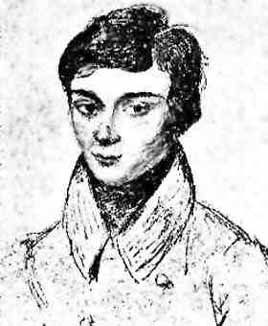
Galois from MacTutor History of Mathematics archive.
Two hundred years ago on October 25, 1811, Evariste Galois was born to Nicolas-Gabriel Galois and Adelaide-Marie Galois.

The family lived in Bourg-la-Reine, a few miles south of Paris, where the father, Nicalos-Gabriel, was mayor and a well-known leader of the liberal movement.

This was a time of political unrest in France. In 1814, Emperor Napoleon Bonaparte abdicated and Louis XVIII stepped in as king promising a constitutional monarchy. However, he concentrated power, strengthened state connections with the Catholic Church, allowed the rich two votes in elections, and censored the press. This lead to the formation of an opposition of those who saw themselves as supporters of the Revolution of 1789. Young Evariste Galois would become involved in the liberal movement.
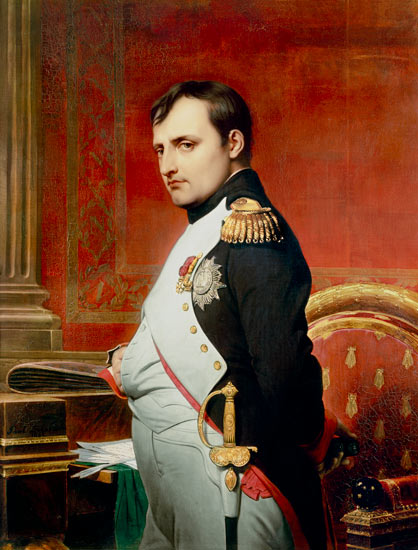 Napoleon from eurohist.tumblr.com/post/2818512621/napoleon-bonaparte-how-people-usually-think-of. |
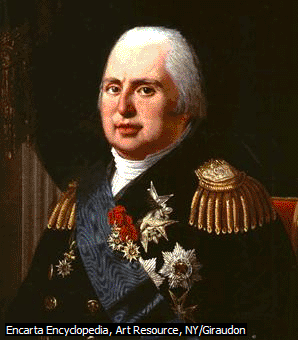 Louis XVIII from mateengreenway.com/steampunk/Space1889timeline.htm. |
In 1824, Louis XVIII died and was replace by Charles X. He abolished press censorship, but strengthened the connection with the Catholic Church and introduced crime against religion into the penal code and made sacrilege a capital offense.
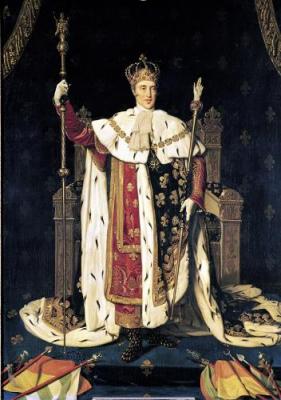
In 1823, Evariste left home and was admitted to the famous Parisian boarding school the Lycee Louis-le-Grand.
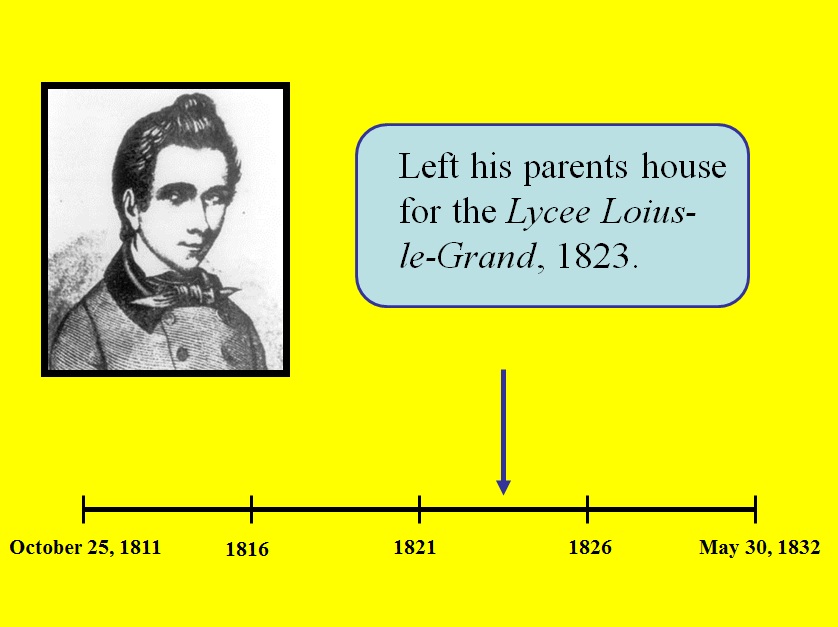
Galois was awarded a prize and other distinctions during his first year at the Lycee. During his second year, he received recognition in Greek and won first prize in Latin poetry. In his third year he suffered from a serious earache that lasted throughout the winter, likely caused by the cold damp conditions in which he lived.
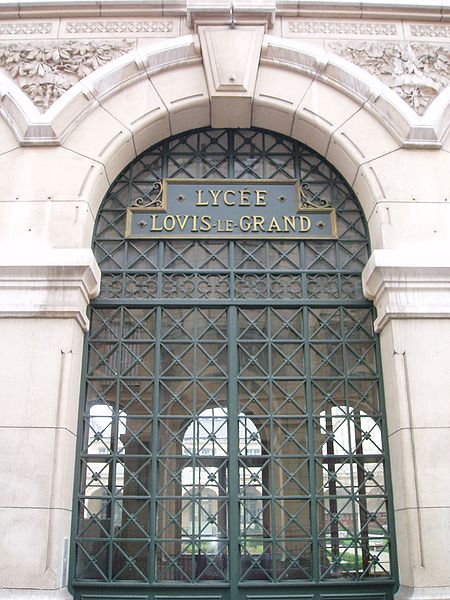 Lycee Louis-le-Grand from Wikipedia. |
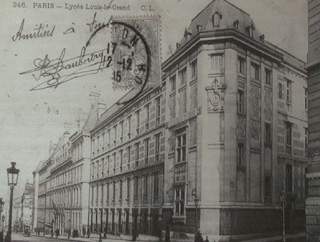 Lycee Louis-le-Grand from www.galois.ihp.fr. |
Adrien-Marie Legendre's Elements of Geometry made him internationally famous. Galois discovered mathematics when he read this book and one can rightly say that it changed his life. In fact, there is a legend that Galois read the book, which was intended for a two-year sequence, in only two days. After reading the book, Galois lost interest in all subjects, except mathematics. He soon realized that he was different from his schoolmates, read more, and started to work on original research. In fact, he thought he had found an algebraic solution to the quintic equation, only to later find an error in his computations.
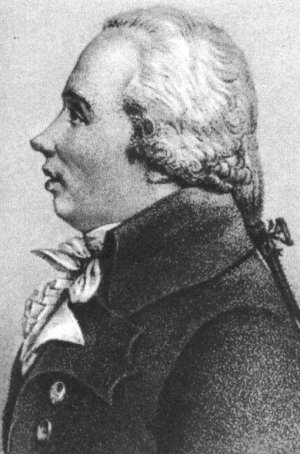 Legendre from www.ee.nthu.edu.tw/~sdyang/Courses/PDE.htm. |
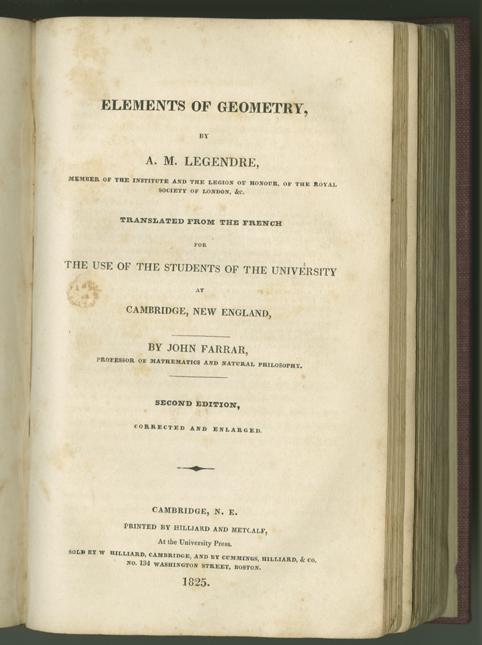 Legendre's Geometry from mathdl.maa.org/mathDL/. |
During the 1828-29 academic year, Galois took a special mathematics class from Louis-Paul-Emile Richard. Richard recognized Galois' talent. Galois regularly did his homework and supplied original solutions which Richard kept and used when teaching subsequent classes. In fact, these solutions survive to today and are now in the Institute of France. This time with Richard probably represents some of the happiest of Galois' life.
Richard helped Galois publish his first paper, "Proof of a Theorem on Periodic Continued Fractions" appeared in the April 1, 1829 issue of Annals of Pure and Applied Mathematics.
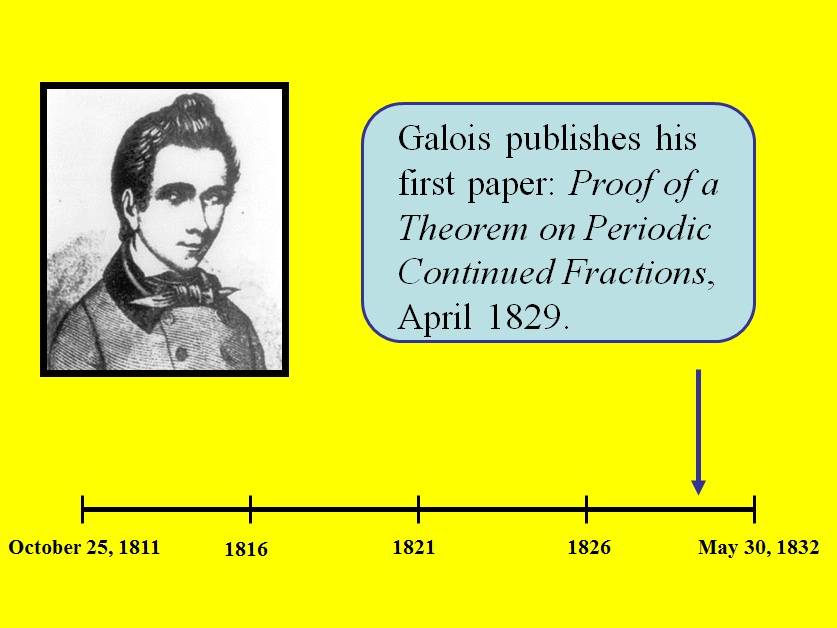
Galois, not knowing of the work of Abel, started working on two of the same problems which Abel explored:
(1) Find all the equations of a specific degree that are solvable by algebra (i.e., by radicals), and
(2) Decide whether a given equation can be solved by algebra or not.
The results of Galois' work were two memoires which Richard proposed could best be judged by the French Academy of Sciences.
Go to the next section: Evariste Galois 2.
Last revised October 19, 2011.